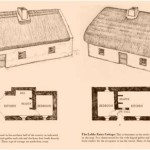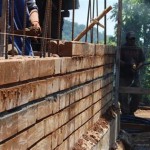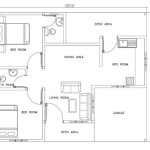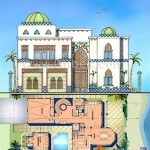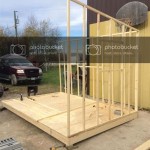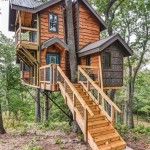Two-Story House Floor Plans in Sri Lanka: Considerations and Design Principles
The demand for two-story houses in Sri Lanka continues to grow, driven by factors such as increasing land costs, aspirations for spacious living, and the desire for modern architectural designs. Building a two-story house presents opportunities for maximizing land utilization and creating distinct living zones within the home. This article explores key considerations and design principles related to two-story house floor plans in the context of Sri Lanka.
Understanding local building codes and regulations is paramount before embarking on any construction project. In Sri Lanka, the Urban Development Authority (UDA) and local Municipal Councils oversee building approvals. These authorities have specific guidelines regarding setbacks, floor area ratio (FAR), building height restrictions, and other structural requirements. Failure to adhere to these regulations can result in costly delays and legal issues. Consulting with a qualified architect or structural engineer familiar with Sri Lankan building codes is therefore highly recommended.
The climate of Sri Lanka, characterized by tropical heat and monsoon seasons, significantly influences house design. Natural ventilation, shading, and rainwater management are crucial considerations. Two-story houses, if designed correctly, can leverage natural air circulation to reduce reliance on air conditioning. Proper roof overhangs and the strategic placement of windows and balconies can provide effective shading. Rainwater harvesting systems can also be integrated into the design to conserve water and mitigate flooding risks.
Optimizing Space Utilization in Two-Story Designs
One of the primary advantages of a two-story house is the ability to maximize land usage, particularly on smaller plots. Careful planning of the floor plan is essential to ensure efficient space utilization. The ground floor typically accommodates living areas, dining spaces, kitchens, and guest bedrooms, while the upper floor is usually reserved for private spaces such as bedrooms, bathrooms, and family rooms. The strategic placement of staircases is crucial, as they can consume a significant amount of floor space. Optimizing staircase design, such as using a compact spiral staircase or incorporating storage space beneath the stairs, can help to minimize space wastage.
Open-plan living is a popular design trend in Sri Lanka, particularly for two-story houses. Combining the living, dining, and kitchen areas into a single open space creates a sense of spaciousness and facilitates social interaction. However, it is important to consider the potential for noise and odor transmission in open-plan layouts. The use of strategically placed partitions, such as half-walls or screens, can help to define different zones within the open space while maintaining a sense of connectivity.
Vertical space can be further utilized by incorporating features such as mezzanine floors or double-height ceilings. Mezzanine floors can provide additional living space or storage areas, while double-height ceilings can create a dramatic architectural effect and enhance natural light penetration. However, these features should be carefully considered in relation to the overall design and budget, as they can increase construction costs.
Incorporating Passive Design Principles
Passive design principles aim to minimize energy consumption by leveraging natural resources such as sunlight and wind. In the context of two-story houses in Sri Lanka, passive design strategies are particularly relevant. Orientation of the house is a critical factor. Ideally, the house should be oriented to minimize exposure to direct sunlight during the hottest parts of the day. East-west orientation can result in excessive heat gain, while north-south orientation is generally more favorable. Shading devices such as pergolas, awnings, and strategically planted trees can further reduce solar heat gain.
Natural ventilation is essential for maintaining comfortable indoor temperatures. Cross-ventilation, achieved by placing windows on opposite sides of the house, allows for natural airflow. The size and placement of windows should be carefully considered to maximize ventilation efficiency. Operable windows that can be opened and closed allow for greater control over airflow. The use of ceiling fans can further enhance ventilation and improve air circulation.
Building materials also play a crucial role in passive design. Materials with high thermal mass, such as brick or concrete, can help to regulate indoor temperatures by absorbing and releasing heat slowly. Insulating the roof and walls can also reduce heat transfer and minimize energy consumption. Light-colored roofs reflect more sunlight and reduce heat gain compared to dark-colored roofs.
Adapting Interior Layouts to Sri Lankan Lifestyles
Sri Lankan culture and traditions often influence the layout and design of houses. Separate kitchens are traditionally preferred in Sri Lanka, as they help to contain cooking odors and maintain cleanliness. However, modern kitchen designs are increasingly incorporating open-plan concepts, with a focus on functionality and aesthetics. The inclusion of a pantry area is also a common feature in Sri Lankan kitchens, providing ample storage space for food and kitchen supplies.
Outdoor spaces are highly valued in Sri Lanka, and two-story houses should ideally incorporate features such as verandas, balconies, or courtyards. These spaces provide opportunities for outdoor living, relaxation, and social interaction. Verandas and balconies can also serve as transitional spaces between the indoor and outdoor environments. Courtyards can create a sense of privacy and provide a protected outdoor space within the house.
The number and size of bedrooms and bathrooms should be determined based on the needs of the family. It is important to allocate sufficient space for each bedroom to ensure comfort and privacy. Ensuite bathrooms are becoming increasingly popular in Sri Lanka, particularly in master bedrooms. The inclusion of a separate powder room or guest bathroom on the ground floor is also a practical consideration.
Storage space is often overlooked in house design, but it is essential for maintaining a clutter-free living environment. Two-story houses can benefit from incorporating built-in storage solutions, such as closets, cabinets, and shelving units. Under-stair storage, attic storage, and basement storage can also provide additional space for storing items that are not frequently used.
The integration of technology into the home is becoming increasingly important. Smart home features, such as automated lighting, climate control, and security systems, can enhance comfort, convenience, and energy efficiency. Home entertainment systems, such as surround sound and smart TVs, are also becoming more common. Careful planning of electrical wiring and data cabling is essential to accommodate these technologies.
Landscaping plays a vital role in enhancing the aesthetic appeal and value of a two-story house. A well-designed landscape can create a welcoming entrance, provide shade and privacy, and enhance the overall living environment. Native plants are well-suited to the Sri Lankan climate and require less maintenance than exotic plants. The inclusion of a garden, lawn, or swimming pool can further enhance the outdoor living experience.
Designing a two-story house in Sri Lanka requires careful consideration of local building codes, climate, cultural preferences, and personal needs. By incorporating passive design principles, optimizing space utilization, and adapting interior layouts to Sri Lankan lifestyles, it is possible to create a comfortable, functional, and aesthetically pleasing home that meets the needs of modern living.

Small Land House Plans In Sri Lanka Two Story Narrow Model Plan Designs

Small Land House Plans In Sri Lanka Two Story 1c9 Designs Exterior Home Design

Dafodil Plan Singco Engineering Model House Advertising With Us න ව ස ලස ම හ ඉ ජ ර සහය Create Floor Plans And Home Houseplansrilanka Com Best Construction Company In

House Plans In Sri Lanka Two Story 3d Home Kedella

Desi Plan Singco Engineering Dafodil Model House Advertising With Us න ව ස ලස ම හ ඉ ජ ර සහය Create Floor Plans And Home Houseplansrilanka Com Best Construction Company In

Best 5 Two Story House Designs In Sri Lanka 2024 C Plus Design

Two Story House Plan And 3d Design Bandaragama Viharaa Home

Two Story House Plan And 3d Gampaha Viharaa Home Design

Pin On Cosy Home

Budget Two Story House Design In Sri Lanka N 3d Visualization Plans For Lankan Style

